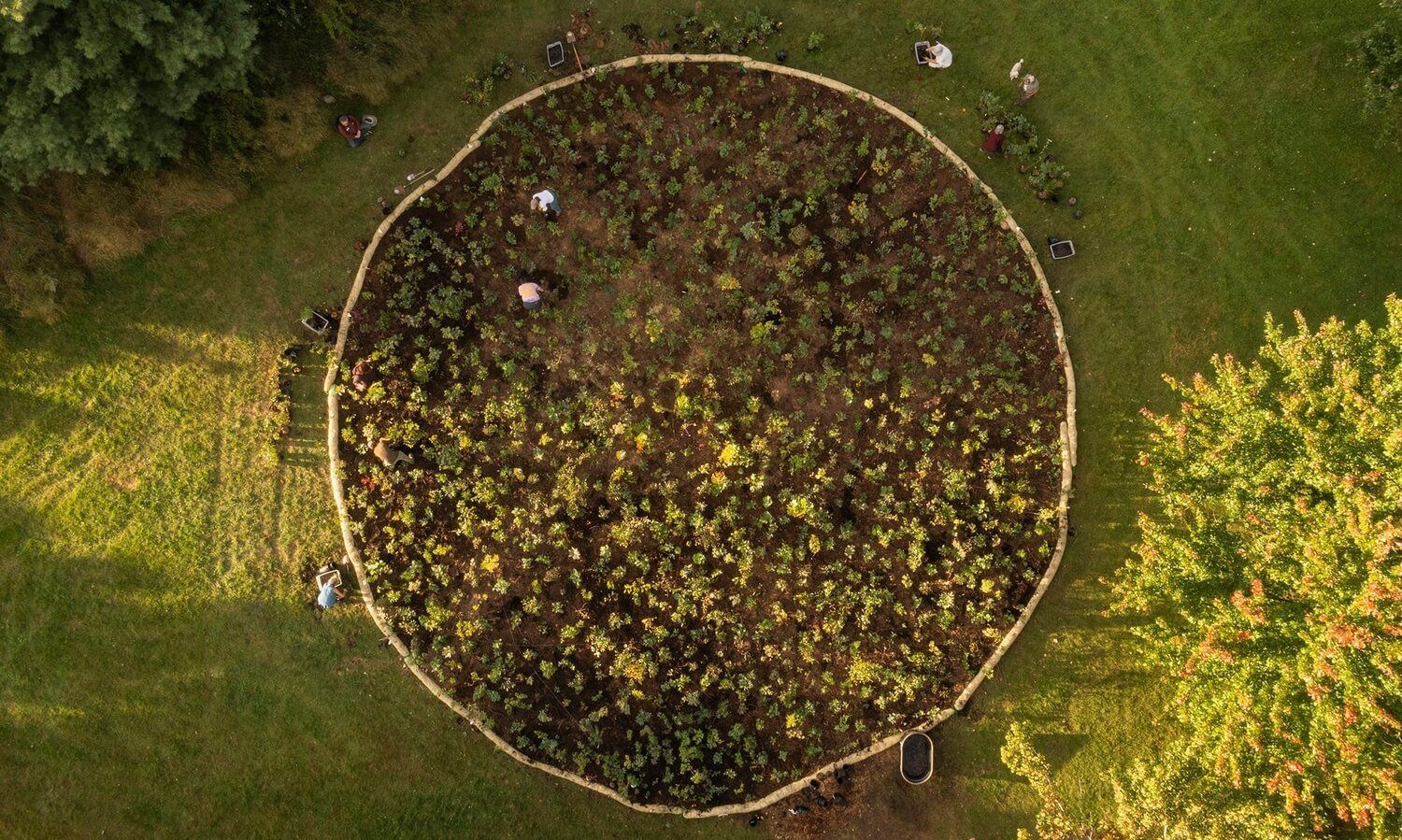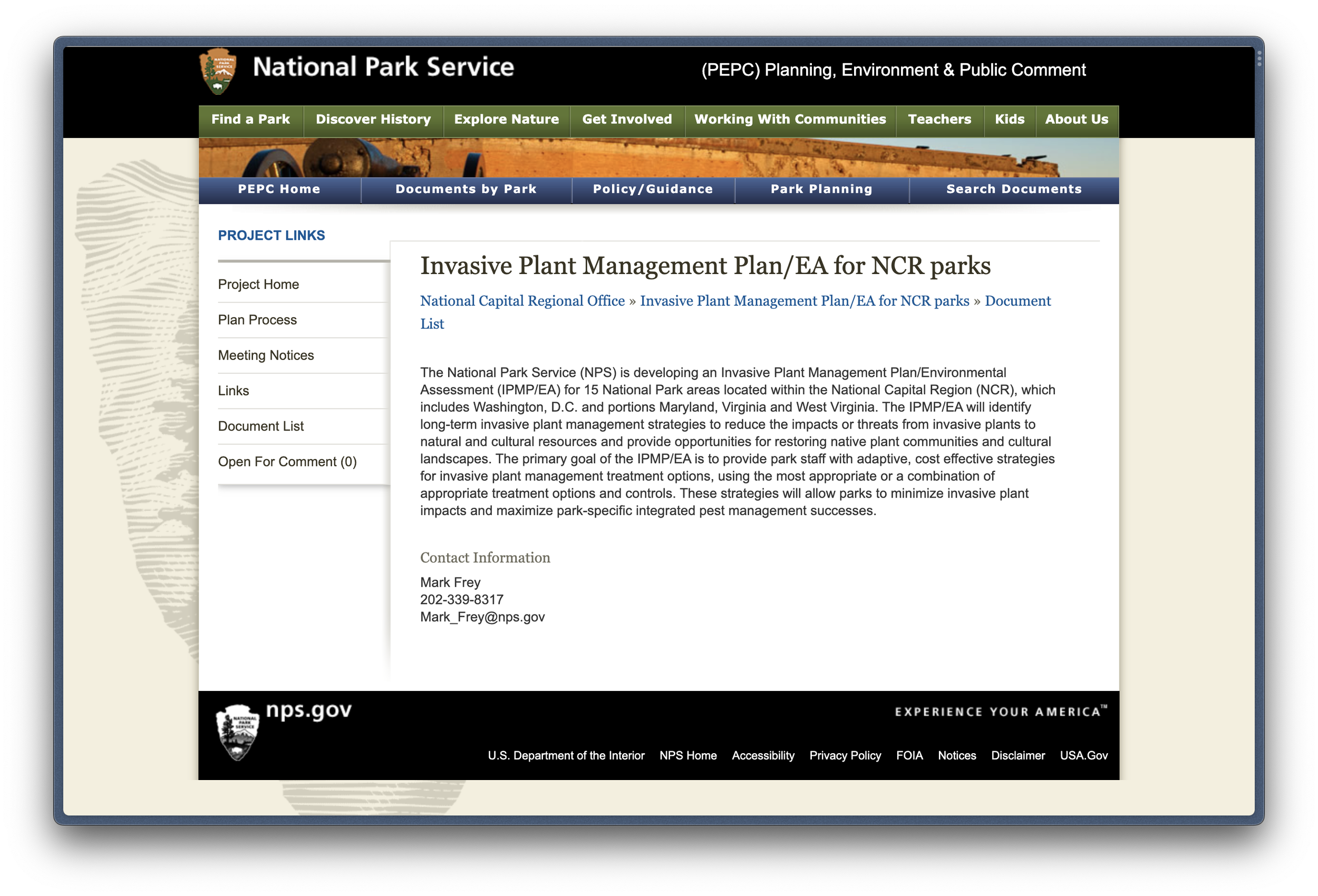Rock Creek Resilience
Forest resilience framework
APACC Citizens Forest Health Working Group Legislative Advocacy Update
DC State Forest Action Plan
The 2008 Farm Bill amended the Cooperative Forestry Assistance Act (CFAA) to require states to complete a statewide assessment of forest resource conditions and a long-term statewide forest resource strategy. The DC State Forest Action Plan (SFAP) is a comprehensive roadmap for investing federal, District, and private resources into managing and maintaining the urban forest.
Office of Natural Area Conservation Establishment Act of 2023
The Office of Natural Area Conservation Establishment Act of 2023 establishes an office in the Department of Energy and Environment (DOEE) responsible for maintaining District-owned and -managed forested natural areas and forest patches in coordination with DDOT’s Urban Forestry Division (UFD).
Introducing Legislation to Create New Office to Manage and Conserve DC Forest Land
Ward 4 Councilmember and Chair of the Council Committee on Facilities and Family Services Janeese Lewis George introduced legislation to establish a new office to overhaul how the District manages and conserves its approximately 500 acres of forest land.
Cooling cities
Harnessing natural areas to combat urban heat. A guide by Natural Areas Conservancy.
Climate Change and our Urban Forest (DRAFT)
Understanding climate change vulnerability in our urban forest and developing adaptation strategies.
Gothamist: Makeshift paths are harming NYC parks
“The city’s green spaces and woodlands became more popular than ever during the pandemic, but now some park officials are worried New Yorkers might be loving their parks to death.”
Forest Management Framework for NYC
“The Natural Areas Conservancy (NAC) is proud to present a bold new vision for the restoration and long-term care of our city’s forests with our partners at the New York City Department of Parks and Recreation (NYC Parks). The Forest Management Framework is a roadmap for the next 25 years to invest in and take care of the agency’s 7,300 acres of forested natural areas.”
Tiny Forest Planting Method Handbook
“Nature makes people healthy and happy, but unfortunately, we have less and less green space in our increasingly urbanised living environment. By planting a Tiny Forest the size of a tennis court, you can help bring nature and adventure back into our busy urban society. A Tiny Forest gives children a place to play and discover how important nature is, and it also has a beneficial effect on the climate in the city.”
Boosting Biodiversity and Climate Resilience
“Miyawaki Forests are dense, biodiverse pocket forests that aim to recreate the relationships and succession of a natural forest. By densely planting a very biodiverse array of native species, such forests encourage collaboration between the plants, fungal and microbial life in the soil, resulting in fast-growing forests with high survival rates.”
UN Environment Programme First Draft of the Post-2020 Global Biodiversity Framework
“In decision 14/34, the Conference of the Parties set out the process for developing a post-2020 global biodiversity framework, established the Open-ended Working Group on the Post-2020 Global Biodiversity Framework to support this process and designated its Co-Chairs.”
Invasive Plant Management Plan/EA for NCR parks
The National Park Service (NPS) is developing an Invasive Plant Management Plan/Environmental Assessment (IPMP/EA) for 15 National Park areas located within the National Capital Region (NCR), which includes Washington, D.C. and portions Maryland, Virginia and West Virginia.
Creating a Nature Smart Washington, DC
Citizen’s Forest Health Working Group
Mission: To protect and enhance the native habitats in the District, both in designated natural areas and on other public and private lands in all eight wards of our city.
Kenilworth Terrace Bridge and Anacostia Avenue Bridge Reconstruction
The National Park Service, on behalf of the District Department of Transportation (DDOT), has submitted preliminary site development plans to reconstruct two bridges in Anacostia Park, Washington DC.
Invasive Removal Efforts
We are becoming aware of the fact that “unmanaged” lands are being taken over by invasive plants. Edges of natural areas along roadsides and up along-side other inhabited or disturbed spaces are particularly vulnerable. Degraded, invaded areas cannot support wildlife—at a time when cities are important habitats for migrating birds. Tree canopy loss due to vines.
Removing invasive plants from natural areas is part of the solution, no matter who the property owner is.
Removing invasive plants from city properties is another part of the solution. Unmanaged areas of city properties and landscaped areas of city properties that contain “legacy plantings” of invasive plants.
Funding and training is needed so that the people who manage city properties have the time and training to properly remove invasive plants without harming native plants.
A survey of all types of city properties is needed to understand the scope of the problem for each property and to make a plan for action. A NatureSmart City is our goal.
Educating District entities, tree stewards, developers and private landowners about the need to stop planting invasive and potentially-invasive plants and trees is part of the solution.
Helping homeowners, through programs such as NatureSmart Homes, to identify and remove invasive plants from their yards and to prioritize native plants.
Our goal is the protection and enhancement of native habitats in the city, both in our natural areas and on other public and private properties.
Recognition and protection of forest patches of a certain size. Creating forested areas where there were not forests previously – Miyawaki Forest, afforesting.
Goal: Help the land owners become better stewards of the natural forested lands within the District of Columbia.
Problems
Many different land owners
Many different agencies with different ideas of stewardship
Many invasive plants on these properties
Many different uses of these lands
Watts Branch Park
Solution Ideas
Unified Invasive Species Management Plan
Unified Weed Warrior Program
Training in Conservation management for District employees responsible for these lands
Unified oversight of Natural Conservation Lands in DC?
Regulation of Invasive Species
Education of the public about the hazards to our natural areas of landscaping with invasive plants
Education of public servants about the hazards to our natural areas of landscaping with invasive plants
DPR Land Overview
DPR’s portfolio encompasses 243 park sites totaling 848 acres of green space, from small triangle parks to regional destinations.
Trees planted in FY 2022: 128
Projected in FY 2023: 500+
DPR Tree Planing Guidelines
Partner Organizations
Casey Trees
Custom Wood Playhouse - DDOT UFD
Conversation Efforts
DPR Lighting Guidelines Cover Page
Lighting Guidelines
5 Principles for Responsible Outdoor Lighting
Useful (clear purpose)
Targeted (only where needed)
Low Light Levels (no brighter than necessary)
Controlled (used only when useful; timers)
Color: Warmer Colors (2200K - 2700K)


























